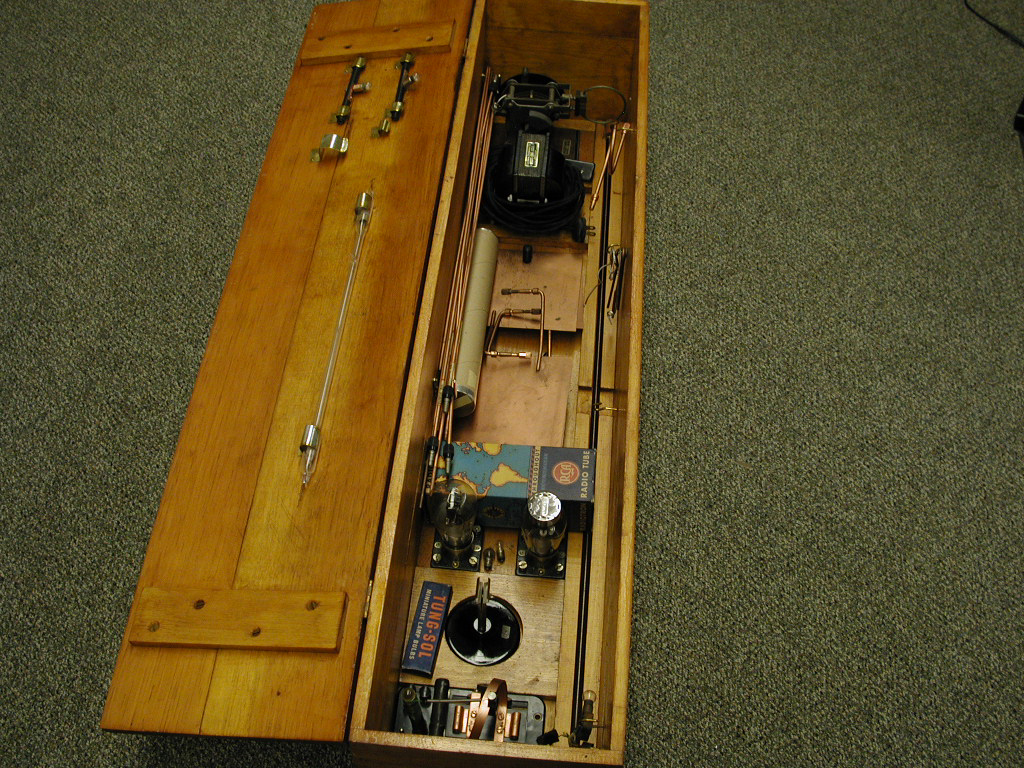
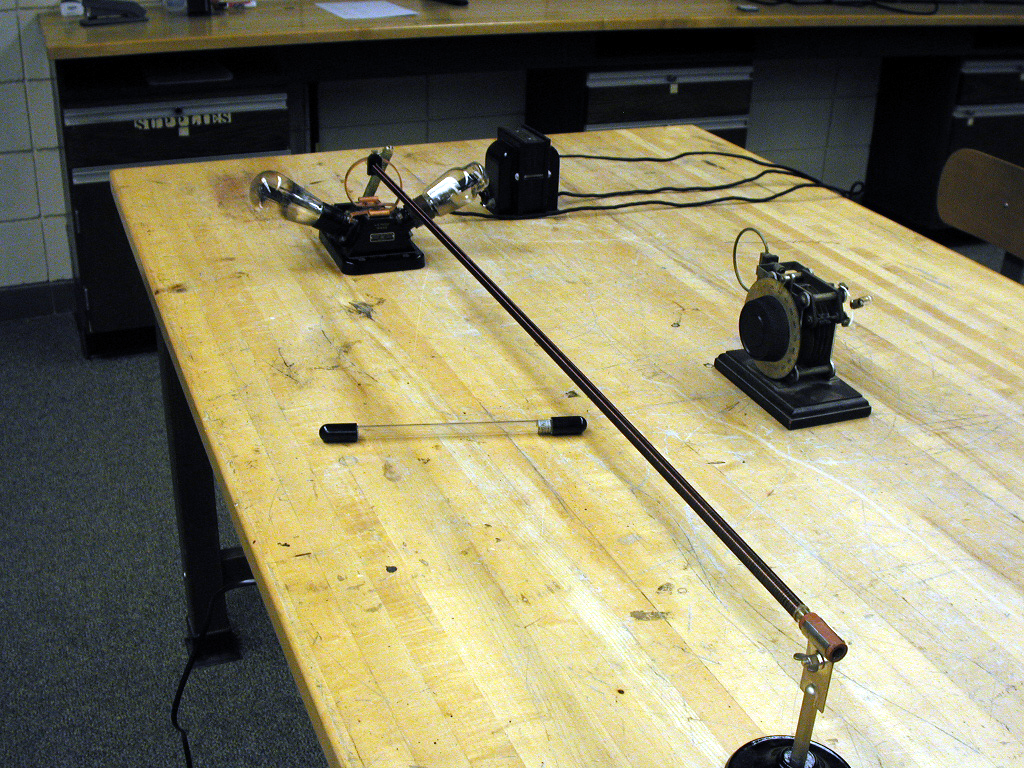
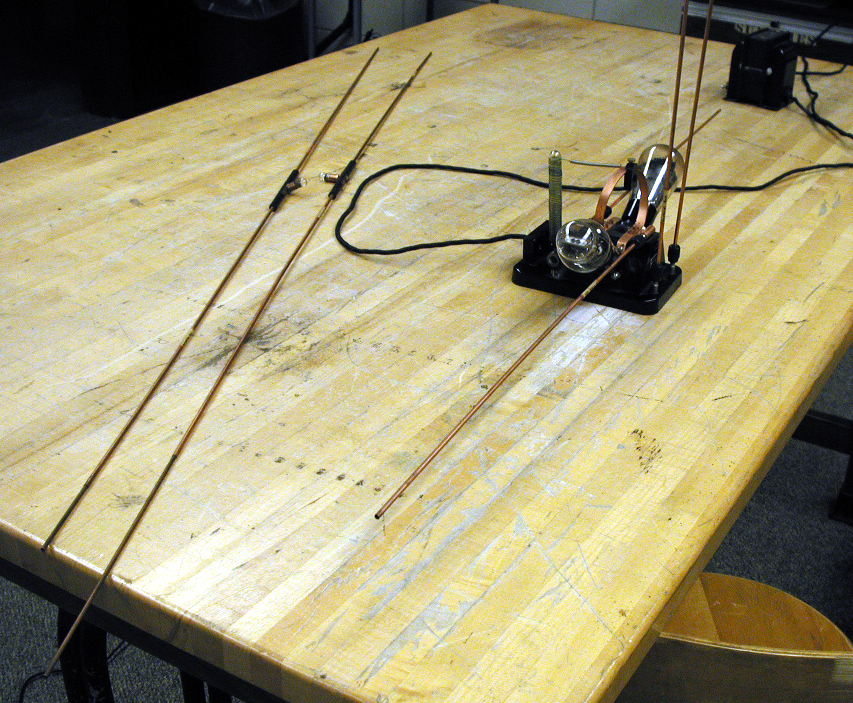
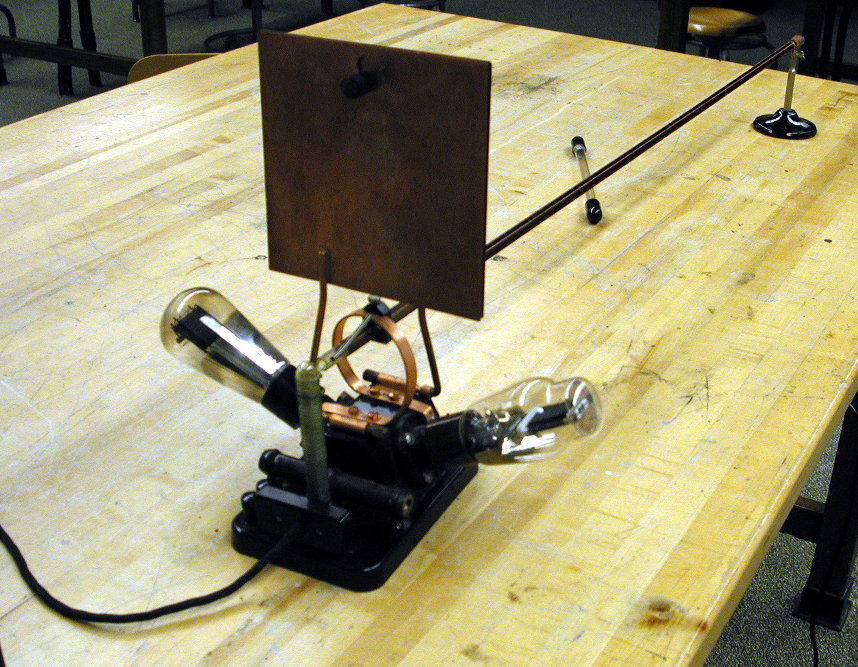
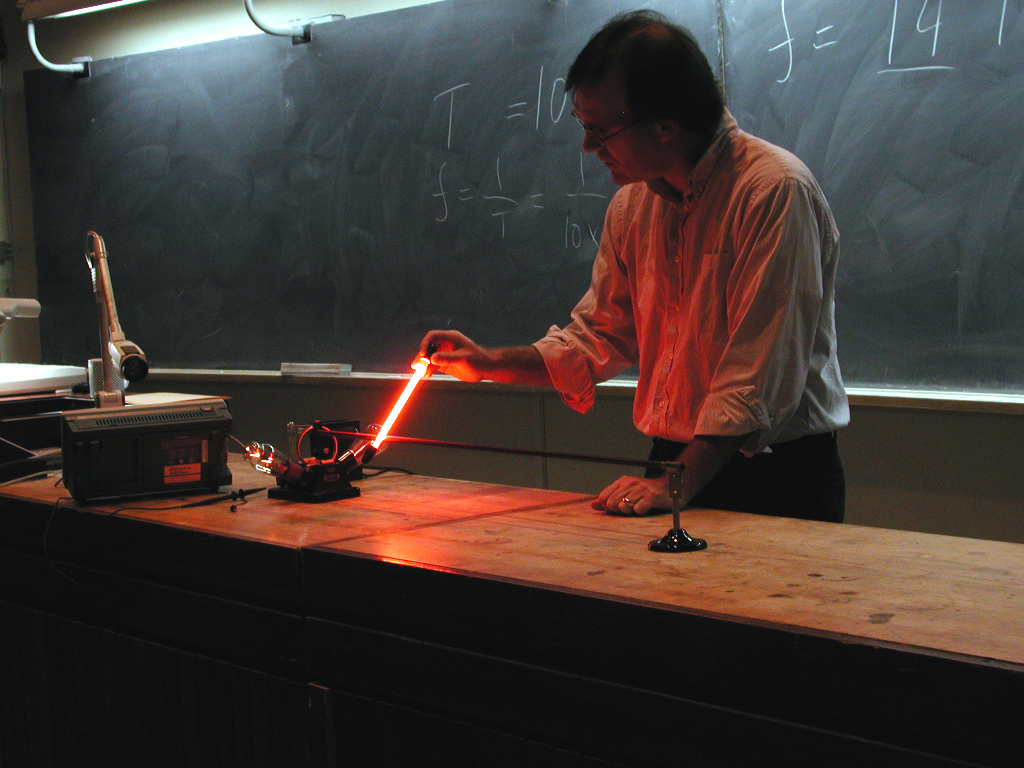

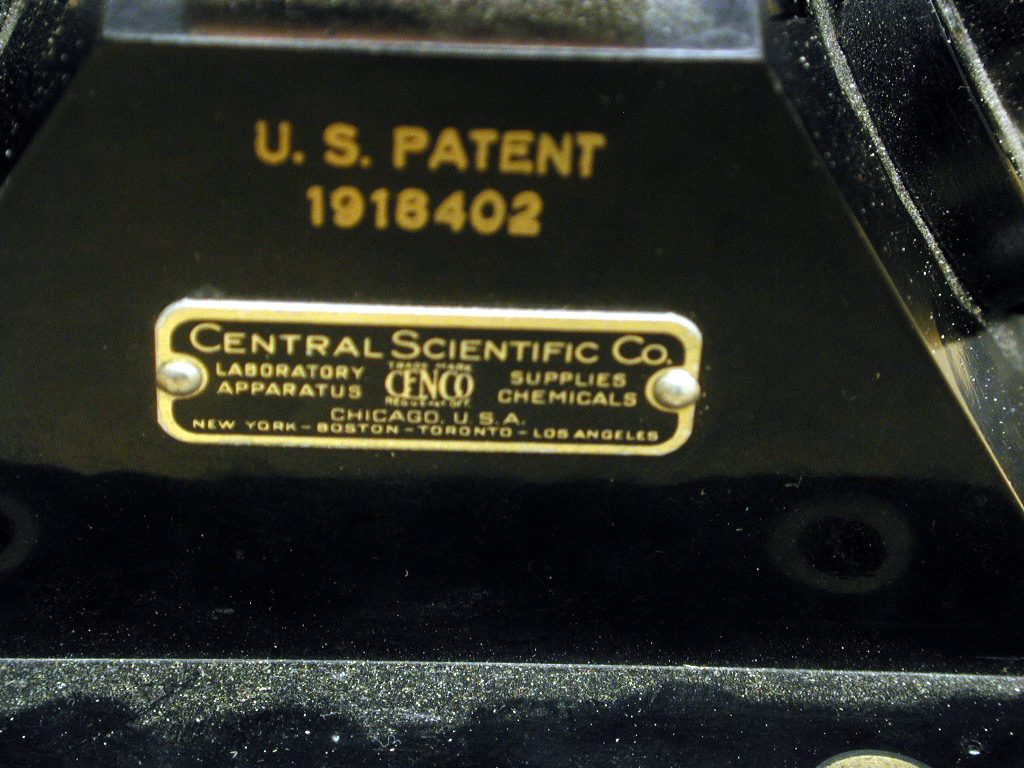
 |
Thes items were purchased around 1940 and demonstrate a number of electromagnetic phenomena - standing waves on a wire, measurement of frequency, high frequency oscillations, transmission of radio waves, polarization, composition of two plane polarized waves, coupling, measurement of electromagnetic field intensity, transmission of polarized waves through a screen, standing waves in space, and standing waves on a solenoid. The wooden box was most likely built here at UVM. The instructions that came with the apparatus can be viewed here. The 1929 Cenco catalog descritpion is posted here. |
 |
The apparatus in the picture to the left is set up to demonstrate electromagnetic standing waves. The oscillator is set up with the solenoid, which has about 12 turns/cm. The nodes and antinodes are detected with the neon wand to the left in the picture. For a movie of this effect, click here. The oscillator frequency was measured at 94 MHz, and the resulting wavelength of the standing wave pattern was observed to be 21 cm - seemingly off by a factor of 2. This result can be explained by treating the solenoid as an anisotraopic helical resonator, for a slightly more detailed explanation go here. More information can be found at http://www.wesleyan.edu/physics/history/radio.html and http://www.wesleyan.edu/physics/history/radiocat.html |
 |
The two receiving antennas with detector bulbs are to the left, the oscillator is fitted with both horizontal and verticle antennas. |
 |
Here the two capacitor plates are attached to the oscillator, which drops the frequency to around 29MHz. |
 |
The neon wand at a node. |
 |
The neon wand at an antinode. |
 |
Back to Topical Index Back to Maker Index Back to Device Index Back to Date Index